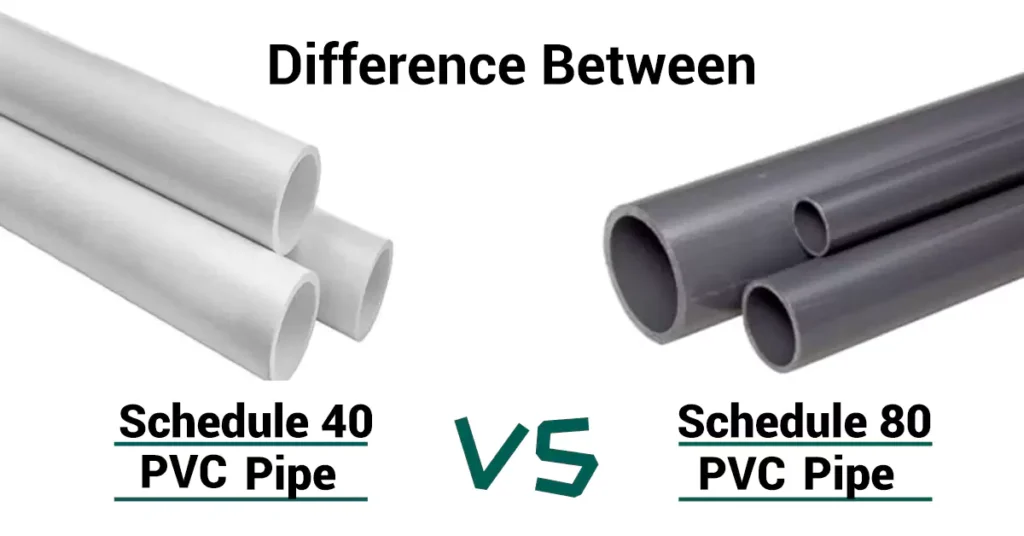
목차
Whether we are DIY renovating our homes, installing water or electrical systems, or working as electrical engineers or plumbers, we often come across PVC pipes or PVC conduits. These versatile components play a crucial role in various construction projects. However, do we truly understand the meanings and differences between different specifications, such as Schedule 40 PVC pipe and Schedule 80 PVC pipe? And which one is better?
In this article, we will delve into a detailed discussion on the differences between Schedule 40 and Schedule 80 PVC pipes, as well as their advantages and disadvantages.
What is a Schedule 40 PVC Pipe?
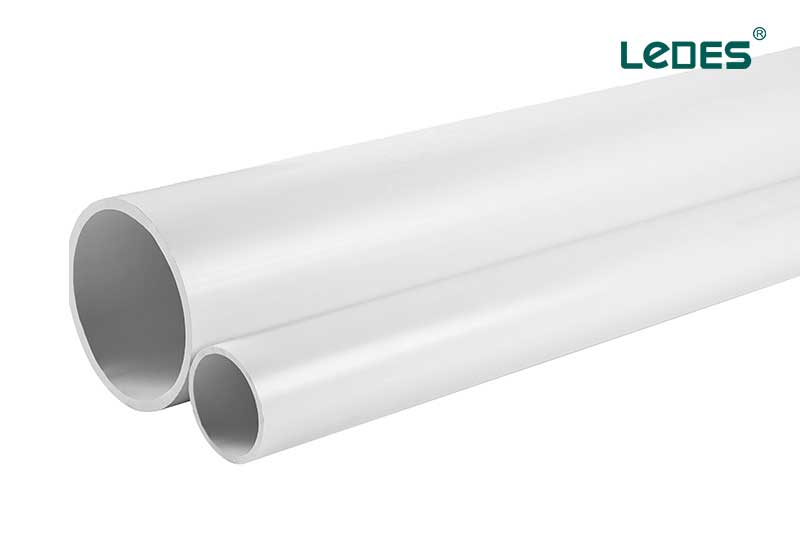
Schedule 40 PVC pipe is usually in white color and used for water application. According to the North American standards, PVC pipes are identified by their nominal pipe size (NPS), which refers to the pipe diameter, and the Schedule number, denoted as “Sched.” or “Sch.”
Schedule 40 PVC pipe is a widely used type of PVC pipe with specific characteristics that make it suitable for various applications. To understand its significance, let’s delve into its definition and key features.
The Schedule number for PVC pipes represents the wall thickness and determines the pressure rating of the pipe. In the case of Schedule 40 PVC pipe, it has a medium wall thickness compared to other schedules.
What is a Schedule 80 PVC Pipe?
Schedule 80 PVC pipe has thicker walls than schedule 40 PVC pipe, which is usually grey and used for water applications, such as irrigation or DWV purposes.
The key difference lies in the thickness of the pipe wall comparing schedule 40 PVC. Schedule 80 PVC pipe has a thicker wall compared to Schedule 40, allowing it to handle higher water pressure ratings of up to 850 PSI. However, due to its thicker wall, Schedule 80 PVC pipe is generally more expensive and less commonly used compared to Schedule 40 PVC pipe.
Schedule 40 Vs Schedule 80 PVC Pipe, what are the difference?
As mentioned earlier, the main difference between Schedule 40 and Schedule 80 PVC pipe (including PVC conduit) lies in the wall thickness. Here are some key difference between them.
1. Wall Thickness
- Schedule 40: Thinner wall thickness
- Schedule 80: Thicker wall thickness, providing greater strength and durability
As we know, wall thickness is directly related to the water pressure the pipe can withstand. Thicker walls provide greater strength and durability. In this comparison, Schedule 80 PVC pipe has a thicker wall and, therefore, offers distinct advantages over Schedule 40 PVC pipe. It is more durable and long-lasting.
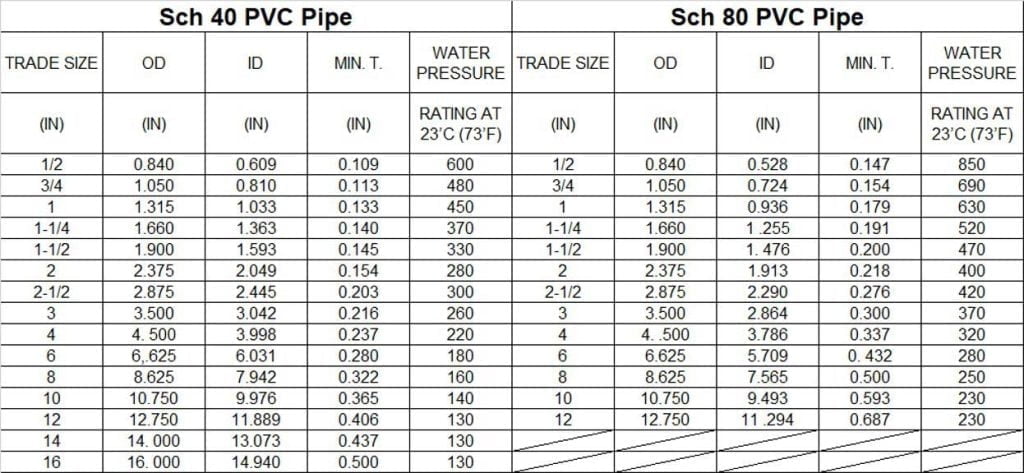
Schedule 40 Vs Schedule 80 PVC Wall Thickness
2. Price
- Schedule 80 is generally more expensive due to its increased wall thickness and material requirements
As stated in the first point, Schedule 80 PVC pipe has a thicker wall than Schedule 40 PVC pipe, which leads to higher manufacturing costs. The increased wall thickness requires more raw materials for production, resulting in higher costs for manufacturers. This, in turn, translates to higher prices for PVC pipe wholesalers and consumers.
3. Weight
Due to the thicker wall per unit volume, Schedule 80 PVC pipe is heavier than Schedule 40 PVC pipe of the same size and length. While this might not be a significant concern for ordinary consumers, it can impact distributors or manufacturers who need to pay higher shipping costs to transport the products from factories or warehouses to consumers. This indirectly adds to the overall costs.
4. Inner Diameter and Outer Diameter
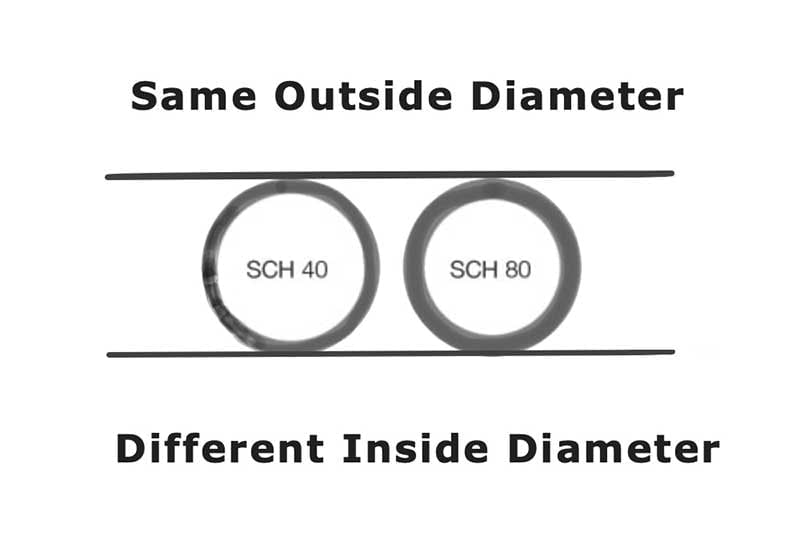
- Both Schedule 40 and Schedule 80 PVC pipe have the same outer diameter, allowing them to use the same fittings for connections
As mentioned earlier, the outer diameter (OD) dimensions of Schedule 40 and Schedule 80 PVC pipe are identical. However, due to the difference in wall thickness, the inner diameter (ID) also varies. In summary, because of the increased wall thickness, the ID of Schedule 80 PVC pipe is smaller than that of Schedule 40 PVC pipe. This difference can be clearly seen in the comparison diagram provided.
5. Installation
Due to its heavier weight, Schedule 80 PVC pipe may require different equipment and personnel for large-scale construction projects compared to Schedule 40 PVC pipe. For example, transportation trucks or lifting equipment may need to accommodate the increased weight. Additionally, both Schedule 40 and Schedule 80 PVC pipe, having the same outer diameter, can use the same fittings for installation, as per ASTM and NEC guidelines. It is important to use specialized PVC glue to secure the connections of all PVC fittings and pipes during installation.
6. Color
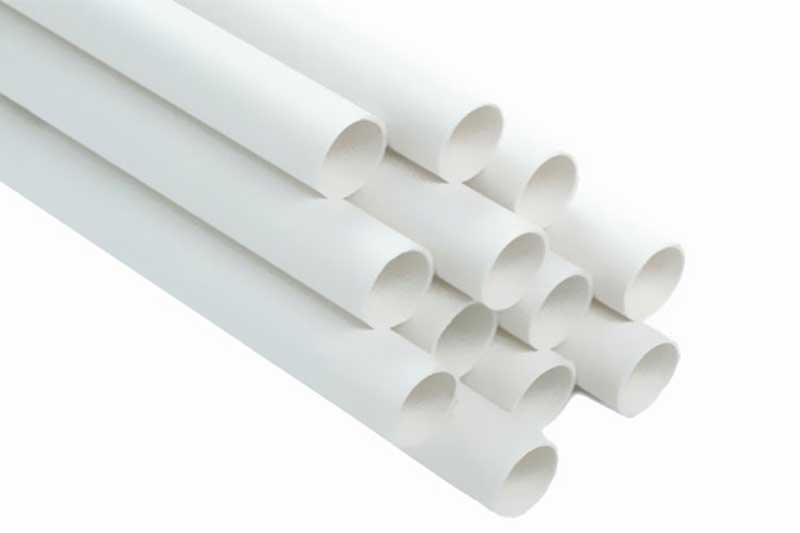
To differentiate between Schedule 40 and Schedule 80 PVC pipe, they are typically manufactured in different colors. Schedule 40 PVC pipe is commonly white, while Schedule 80 PVC pipe is usually dark gray. This color distinction helps with visual identification and facilitates installation and construction.
7.Advantages & Disadvantages
- Schedule 40: Wide applicability, thinner wall thickness, lighter weight, lower price, larger inner diameter, and more size options
- Schedule 80: Wide applicability, thicker wall thickness, heavier weight, smaller inner diameter, fewer size options, and higher water pressure rating
When comparing Schedule 40 PVC pipe to Schedule 80 PVC pipe, it’s important to consider their respective advantages and disadvantages:
Schedule 40 PVC:
Wide applicability, suitable for most building and engineering projects
Thinner wall thickness compared to Schedule 80 PVC
Lighter weight, lower price, and lower transportation costs
Thinner wall thickness results in a larger inner diameter
Can withstand water pressure of up to 600 PSI
More size options available
Generally white in color, but not always
Schedule 80 PVC:
Wide applicability, suitable for projects with higher requirements
Thicker wall thickness compared to Schedule 40 PVC
Heavier weight, resulting in higher prices and transportation costs
Thicker wall thickness results in a smaller inner diameter
Can withstand water pressure of up to 850 PSI
Fewer size options available
Generally dark gray in color, but not always
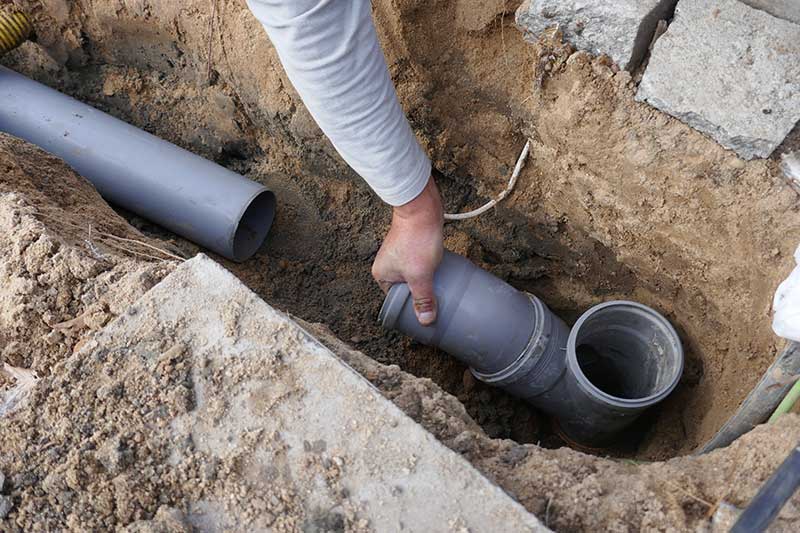
So, for general DWV (drainage, water, and vent) purposes, using Schedule 40 PVC pipe is more cost-effective. However, if your project has higher requirements, using Schedule 80 PVC pipe would be better.
Schedule 40 PVC Pipe Vs.Schedule 40 Electrical Conduit
Based on the National Electrical Code (NEC) 352, Schedule 40 PVC Electrical Conduit is approved for various applications. These include (A) concealed installations, (B) environments with corrosive influences, (C) areas with cinders, (D) wet locations, (E) dry and damp locations, (F) exposed installations, (G) underground installations, (H) supporting conduit bodies, and (I) complying with insulation temperature limitations. In some cases, it may also be allowed for above-ground installations. However, it’s important to note that if the conduit is not specifically designed to withstand direct sunlight exposure, prolonged use in outdoor applications may result in issues such as cracking or damage.
On the other hand, Schedule 40 PVC Pipe is more commonly used for drainage, water, and vent (DWV) systems. Due to the differences in their intended applications, there are variations in the manufacturing processes between Schedule 40 PVC Electrical Conduit and Schedule 40 PVC Pipe. For example, PVC pipe is primarily designed to handle fluid pressure, so its resistance to water flow pressure becomes an important indicator of product quality. In contrast, Schedule 40 Electrical Conduit is primarily focused on protecting internal wiring, making impact resistance a crucial factor in evaluating its quality.
Despite their differences, both Schedule 40 PVC Electrical Conduit and Schedule 40 PVC Pipe share some common advantages. They both offer resistance to chemical corrosion, are non-rusting, and have excellent durability. These characteristics are inherent to their PVC material.
Schedule 40 PVC Applications
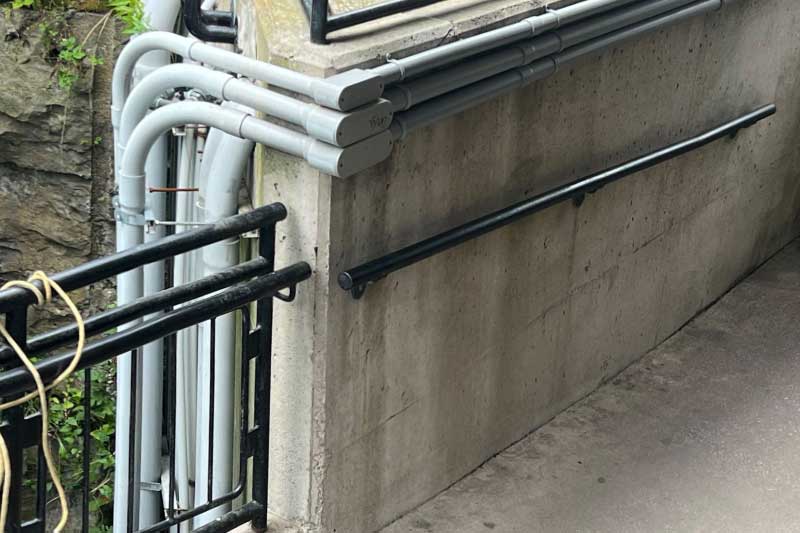
What is Schedule 40 PVC Pipe Used For?
Schedule 40 PVC pipe is most commonly used for water, gas, and fluid transport in plumbing and irrigation. Schedule 40 PVC is usually in white and has thinner walls
Where Can Schedule 40 PVC Conduit be Used?
스케줄 40 PVC 도관 safely houses electrical systems for both power and telecommunications, meeting NEC 352 standards for above-ground, direct burial, and concrete-encased applications.
Schedule 40 PVC pipe and Schedule 40 PVC Electrical Conduit are widely used in various fields and industries due to their versatility and reliability. Some of the common applications where schedule 40 PVC pipes are frequently utilized include:
- Residential electrical and plumbing systems: Schedule 40 PVC pipe is commonly used for wiring and plumbing installations in residential buildings, providing a safe and durable conduit for electrical wiring and water transportation.
- Commercial building electrical and plumbing management systems: In commercial buildings, such as offices, retail spaces, and industrial facilities, Schedule 40 PVC pipe is used for managing electrical wiring and plumbing systems, ensuring efficient and reliable operations.
- Landscape irrigation: Schedule 40 PVC pipe is popularly employed in landscape irrigation systems to transport water to gardens, lawns, and other outdoor areas.
- Agricultural irrigation: Farmers and agricultural businesses rely on Schedule 40 PVC pipe for irrigation purposes, ensuring proper water distribution to crops and fields.
- Swimming pools and spa centers: Schedule 40 PVC pipe is commonly used in the construction and maintenance of swimming pools and spa centers, facilitating water circulation and filtration systems.
- Laboratories: Schedule 40 PVC pipe is utilized in laboratory settings for various purposes, such as chemical transport, ventilation systems, and fluid management.
- Potable water services: Due to its resistance to corrosion and chemical leaching, Schedule 40 PVC pipe is often used for transporting drinking water, ensuring clean and safe water supply in residential and commercial settings.
- Hydronic systems: Schedule 40 PVC pipe is employed in hydronic heating and cooling systems, facilitating the circulation of hot or cold water to regulate indoor temperatures.
- Water supply systems: Municipal water supply systems often use Schedule 40 PVC pipe for water distribution networks, providing reliable and efficient water supply to communities.
According to ASTM 1785 and ASTM 2665 standards, Schedule 40 PVC pipe is available in trade sizes ranging from 1/2 inch to 16 inches. The water pressure rating can vary from 130 to 600 PSI, depending on the specific pipe dimensions. Schedule 40 PVC pipe is commonly found in white color, although it can also be available in other colors for specific applications.
Schedule 40 PVC Pipe Size Chart
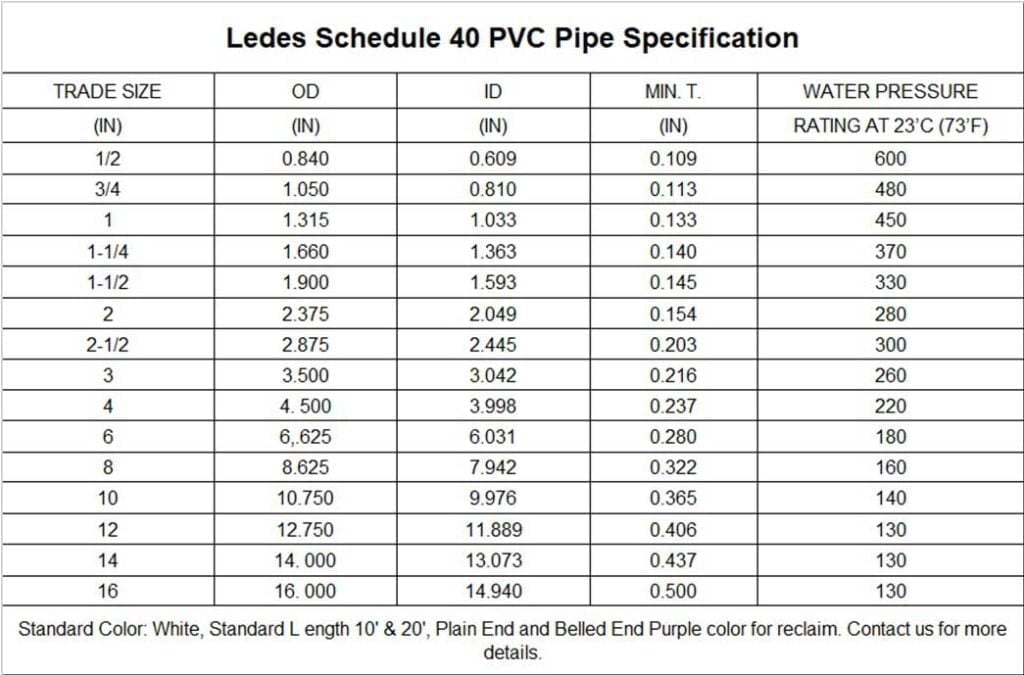
Schedule 80 PVC Pipe Size Chart
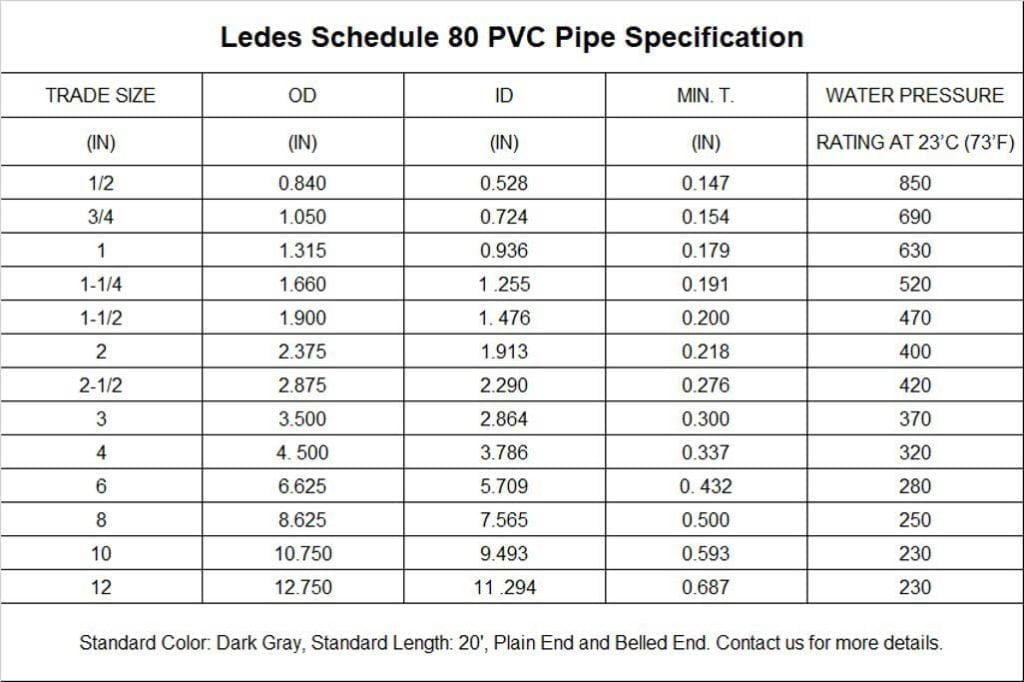
Similar to Schedule 40 PVC pipe, 스케줄 80 PVC 도관 pipe offers the same advantages associated with plastic pipes. It exhibits resistance to chemical corrosion, is non-rusting, and has high durability. These characteristics make it suitable for a wide range of applications.
Schedule 80 PVC Pipe Applications
Schedule 80 PVC pipe, with thinner walls than Schedule 40 PVC pipe, is tailored for demanding industrial applications like chemical processing, aquaculture, and water treatment, requiring piping to withstand high pressures and harsh conditions.
Schedule 80 PVC conduit pipe finds applications in various fields, including:
- Residential electrical and plumbing systems: Schedule 80 PVC pipe is commonly used in residential buildings for electrical conduit systems. It provides a durable and corrosion-resistant conduit for safely routing electrical wires throughout the house. Additionally, it can be used for plumbing applications where higher water pressure ratings are required, such as main water supply lines or irrigation systems.
- Commercial building electrical and plumbing management systems: In commercial buildings, such as offices, shopping centers, and hospitals, Schedule 80 PVC pipe is utilized for electrical conduit systems to protect and route electrical wiring. It is also employed for plumbing applications that demand higher pressure ratings, ensuring reliable water supply and drainage throughout the building.
- Landscape irrigation: Schedule 80 PVC pipe is suitable for landscape irrigation systems, particularly in areas with higher water pressure requirements. It can efficiently transport water to gardens, lawns, and other outdoor spaces, ensuring proper irrigation and maintenance of plants.
- Agricultural irrigation: In agricultural settings, Schedule 80 PVC pipe is commonly used for irrigation purposes. It can handle higher water pressure, making it suitable for large-scale irrigation systems in farms and fields.
- Swimming pools and spa centers: Schedule 80 PVC pipe is ideal for constructing and maintaining swimming pools and spa centers. It can withstand higher water pressure and provide reliable water circulation and filtration, ensuring proper functioning of these recreational facilities.
- Laboratories: Schedule 80 PVC pipe is often utilized in laboratory settings for various purposes. It can be used for transporting chemicals, gases, or fluids, as well as for ventilation systems or waste management.
- Potable water services: Schedule 80 PVC pipe can be used for delivering drinking water in residential, commercial, or industrial settings. Its corrosion resistance and durability make it suitable for ensuring clean and safe water supply.
- Hydronic systems: Schedule 80 PVC pipe is commonly employed in hydronic heating and cooling systems, where higher pressure ratings are required. It efficiently circulates hot or cold water, helping to control indoor temperatures.
- Water supply systems: Municipal water supply systems may utilize Schedule 80 PVC pipe in areas where higher water pressure is expected or in larger diameter pipes for efficient water distribution.
- Commercial and industrial construction projects with higher demands: Schedule 80 PVC pipe is often used in commercial and industrial projects that require higher pressure ratings or where the application demands increased durability and strength. This can include chemical processing plants, manufacturing facilities, or industrial environments where the pipe needs to withstand more demanding conditions.
In terms of size and characteristics, Schedule 80 PVC pipe is available in sizes ranging from 1/2 inch to 12 inches. One important distinction from Schedule 40 pipe is that Schedule 80 pipe is typically dark gray in color, making it easier to differentiate between the two types.
It’s important to note that the outer diameter (OD) dimensions of Schedule 40 and Schedule 80 PVC pipe are identical. The main difference lies in the thickness of the pipe wall, which affects the inner diameter (ID) dimensions.
Is There Another Choice?
- Schedule 80 & 120 PVC pipe: Available for more demanding commercial buildings or specific applications
- CPVC pipe: Offers better performance, increased strength, and improved durability compared to PVC pipe
Yes, in addition to Schedules 40 and 80, there is also Schedule 120 PVC pipe. Compared to Schedule 80 pipe, Schedule 120 pipe has an even thicker wall thickness and is suitable for more demanding commercial buildings or specific applications, such as chemical plants or coastal drainage projects.
Additionally, there is CPVC pipe available as an alternative. CPVC offers better performance, increased strength, and improved durability compared to PVC pipe.
Schedule 40 & 80 PVC Pipe Price
As a manufacturer, we produce a range of PVC pipe products using high-quality materials and the latest manufacturing techniques. Our product line includes UL & CSA certified conduits and fittings, and we continuously upgrade our offerings based on customer requirements. If you need the latest distributor or wholesale prices, please feel free to contact us. As our distributor, you will also benefit from additional services and support.
Final Thought
Based on the information provided above, you should now have a better understanding of the differences between Schedule 40 and Schedule 80 PVC pipe. Depending on your specific requirements and project needs, you can make an informed decision on which product to choose. If you need further information about our products or the industry, please feel free to reach out to us by submitting a contact form or sending an email. We aim to respond to your inquiry within one business day.
Related Questions
Is Schedule 40 PVC safe for drinking water?
While Schedule 40 PVC has been approved for potable water applications, copper is generally considered safer for long-term drinking water distribution and plumbing.
PVC is not recommended for carrying hot water since certain chemicals can potentially leach from the material as temperatures increase. For cold water distribution under 80°F, Schedule 40 PVC poses minimum health risks when properly joined and installed according to code.
The Food and Drug Administration classifies rigid PVC (types I and II) as acceptable for use in fabricating parts of articles that contact food. However, very hot or boiled water may cause greater extraction of certain phthalate plasticizers from PVC over time.
Alternatives like CPVC (chlorinated polyvinyl chloride) provide improved resistance to hot water compared to standard PVC, making it a better option when higher water temperatures are involved.
For drain, waste and vent (DWV) systems, Schedule 40 PVC is completely suitable and poses no concerns, as it does not come into direct contact with consumables. But for potable cold water, many building codes and plumbers prefer copper or CPVC due to its superior durability with prolonged hot water exposure.
스케줄 40 PVC 파이프는 햇빛 아래에서 얼마나 오래 지속됩니까?
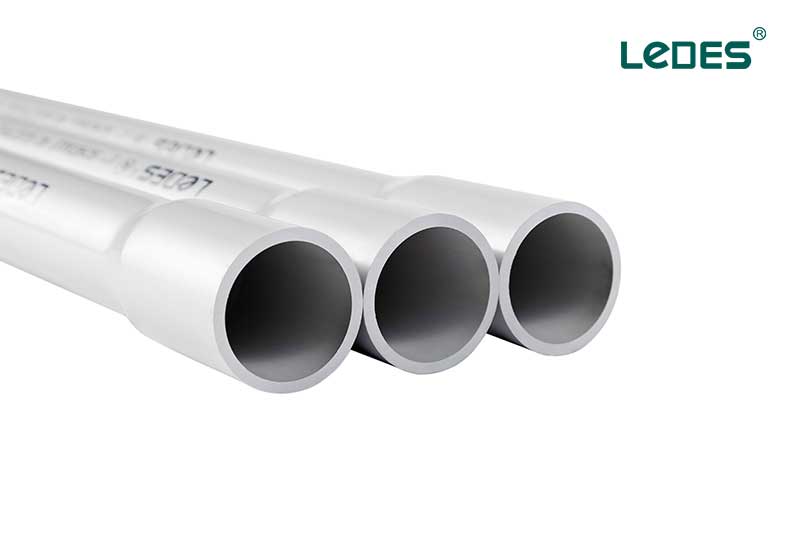
While PVC theoretically has a lifespan of up to 100 years with normal use, outdoor exposure can significantly reduce its longevity. When exposed to direct sun:
- UV degradation from sunlight causes PVC to become brittle and crack over time. Darker colors like grey or black provide more UV protection than white.
- Schedule 40 PVC is rated for underground/burial applications but not long-term sun exposure above ground. Cracking/failure could occur within 5-10 years without UV inhibitors.
- Factors like temperature fluctuations, ozone levels and air pollutants may accelerate UV damage. Southern regions tend to see lifespan reductions of 30-50%.
- Adding 2-3% UV stabilizers to PVC during manufacturing extends its service life when exposed to sun. This helps prevent major cracking for 15-25 years.
- Covering exposed PVC pipes with a protective UV-resistant wrap/jacket shields it from direct rays and extends longevity considerably.
To maximize 50+ year life when irrigating or using above-ground PVC that’s exposed to sunlight, it’s best to use pipes rated for outdoor use containing UV inhibitors or provide full coverage with a UV-blocking wrap. Proper material selection and protection are key.
Can a PVC pipe be used for electrical conduit?
No, a standard PVC pipe cannot be used for electrical conduit. While both are made of PVC, PVC pipes and electrical conduit have different design priorities:
- PVC pipes are designed and rated to withstand internal fluid/water pressures during plumbing applications. Pressure tolerance is the main consideration.
- Electrical conduit must provide robust protection and insulation for enclosed wiring to code standards. Its formulation and thickness are optimized for mechanical strength, impact/puncture resistance.
- Conduit walls are thicker than basic piping to prevent cracks/breaks that could damage wiring. Additional reinforcement is sometimes included.
- Fire ratings are critical for conduit since codes require it to contain fires and allow safe evacuation. Piping does not face the same heating demands.
- Manufacturing processes also differ to meet unique conduit specifications for crush resistance, pulling capacity, fittings, and ease of installation around obstructions.
While PVC makes an effective non-conductive/non-corrosive choice for both uses, only conduit specifically listed for electrical applications should run wiring. Using standard PVC piping risks compromising wire insulation and safety over time against mechanical stresses. Proper component selection ensures electrical system integrity.
LEDES 소개
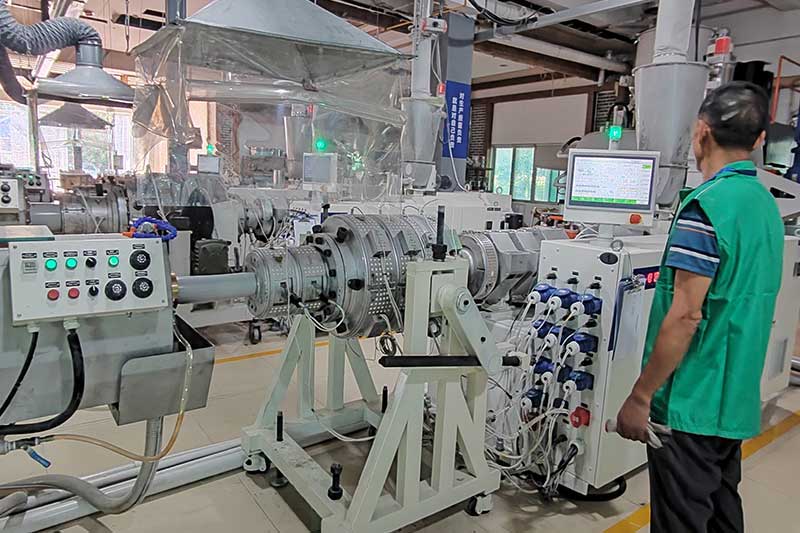
LEDES is reliable electrical & water plastic pipe manufacturer & wholesaler, with years of commitment to product quality and innovation, LEDES has become the 1st UL and CSA certified manufacturer in China.
프로젝트 사례
LEDES serves a diverse range of applications, including electrical conduit and fitting products for residential, commercial and industrial applications. And has been a key supplier for many major building projects, including the CHPE project in US, Melbourne Tunnel project, PV2 project in Abu Dhabi, and the 2.6GW photovoltaic project in Saudi Arabia. These are well-known projects showcase Ledes’ capabilities in providing conduit solutions for large-scale and complex construction endeavors. The company’s track record demonstrates its ability to meet the demanding requirements of such projects and deliver reliable and efficient solutions.
제품 범위
LEDES는 전기 시스템을 위한 완벽한 전기 제품군을 제공합니다. 여기에는 다음이 포함됩니다.
- American standard UL listed products – Schedule 40 & 80 rigid PVC conduit and fittings, ENT.
- Canadian standard CSA certified products – PVC rigid conduit, DB2 communication duct, Nonmetallic tubing, etc.
- Australian & New Zealand standards – Heavy duty & Medium duty conduits, tubing, and fittings.
- 영국 표준 제품;
- 저연성 할로겐 프리 도관 및 부속품;
- 자외선 차단 태양광 발전 전기 도관 및 부속품.
제품은 UL, CSA, AS/NZS, CE, IEC 및 기타 인증을 받았습니다. 엄격한 산업 표준을 준수하고 다양한 애플리케이션 요구 사항을 충족합니다.
연락하다
That’s it. If you still have any questions, you can send email to us now.



